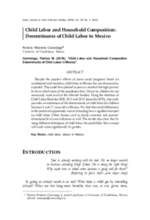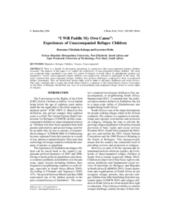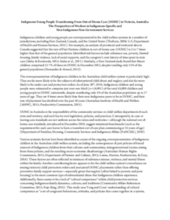Demographic Data
|
Sources: World Bank, UNICEF, UNDP HDR 2015, DHS 2011 |
Displaying 11011 - 11020 of 14390
The researcher in this study investigates the “relationship between child labor and the opportunity cost of schooling, taking into account other factors that influence parents’ decisions about child labor and schooling.”
This study notes that there are currently 700 million people below the poverty line. According to this study, around 40 percent are considered vulnerable children. It further states that according to UNICEF India has approximately 11 million children living on the streets. It is one of the highest concentration of the street children in the world. To investigate the status of street children, this study investigated outreach work in Latvia, Czech Republic and India.
This is a study from Catholic Relief Services that investigates the factors related to children’s placement in Catholic-affiliated residential care facilities in Zambia. According to this study, the government estimates that there are approximately 190 residential-care facilities located in Zambia, and of those 40 are Catholic-affiliated. At the time of this study, there were 1674 residents living in residential care.
This study reported that unaccompanied refugee children face greater challenges compared to their accompanied refugee counterparts.
This is an article discussing a research study performed to determine the best forms of out of home care for children.
This is a 15 month qualitative study involving semi-structured interviews with families and boys at three stages: preparing for return, in the first three months of reintegration and successfully reintegrated.
This article investigates the current leaving care and post-care supports that are available to Indigenous care leavers in Australia.
This article studies different medical and psychological models of orphanhood and the effects these models have on the resiliency of orphanhood.
This paper highlights the difficulties faced by foreign minors and how the gaps in law leave them undocumented, vulnerable and unable to access social services. This paper also discusses how South Africa’s approach to accompanied and unaccompanied foreign minor children provides no durable long term solutions for these children, effectively leaving them in a legal hole once they reach the age of majority.
This article discusses adoption in the international human rights framework. Most specifically, it focuses on the rights of the child and how to proceed with adoptions by keeping in mind the best interest of the child.







